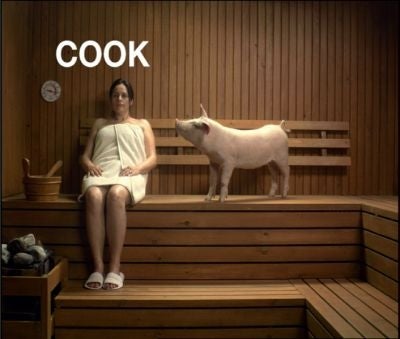Your support helps us to tell the story
From reproductive rights to climate change to Big Tech, The Independent is on the ground when the story is developing. Whether it's investigating the financials of Elon Musk's pro-Trump PAC or producing our latest documentary, 'The A Word', which shines a light on the American women fighting for reproductive rights, we know how important it is to parse out the facts from the messaging.
At such a critical moment in US history, we need reporters on the ground. Your donation allows us to keep sending journalists to speak to both sides of the story.
The Independent is trusted by Americans across the entire political spectrum. And unlike many other quality news outlets, we choose not to lock Americans out of our reporting and analysis with paywalls. We believe quality journalism should be available to everyone, paid for by those who can afford it.
Your support makes all the difference.A new food safety campaign has been launched in the US at a time when E. coli concerns are at an all time high, and when summer and barbecue season traditionally translate into increased food-related illnesses.
The multimedia campaign Food Safe Families includes YouTube videos, a Facebook page and Twitter account as well as an online database with answers to 1,500 food safety questions under the persona Ask Karen. It launched June 28.
The "Check Your Steps" guide is a four-step reminder advising consumers to clean, separate, cook and chill foods properly.
The first step is to clean kitchen surfaces, utensils and hands with soap and water while preparing food. Different cutting boards should be used for handling raw meat and other foods. Experts also advise investing in a food thermometer as the most reliable way to determine if the item is safe to eat. And the final step is to chill raw and prepared foods promptly.
The public service campaign was created in joint partnership between several different departments including the US Department of Agriculture's Food and Drug Administration, the Centers for Disease Control and Prevention and the Ad Council.
In the US, one in six people - or 48 million - fall ill due to food poisoning annually. It also kills 3,000 Americans every year.
This month, 47 people in Germany died from E. coli poisoning. The same strain sickened eight people in France and both incidents have been traced back to contaminated sprouts. On June 28, a batch of alfalfa and spicy sprouts in the US were linked to cases of Salmonella poisoning.
The Food Safe Families campaign is also available in Spanish.
On Thursday, June 30, @FoodSafetyGov and @USDAFoodSafety will host a live Twitter chat and Q1A at 1 p.m. EDT with the hashtag #checksteps.
Here are a few more tips on how to clean, cook, separate and chill foods properly.
CLEAN
When washing your hands, remember to scrub the back of hands, between fingers and underneath fingernails. Continue washing for at least 20 seconds, or the equivalent of singing "Happy Birthday" from beginning to end twice.
Clean utensils and cutting boards with hot, soapy water after each use.
Wash fruits and veggies even if you plan to peel them.
Refrain from washing raw meat and poultry as that can help spread bacteria as their juices may contaminate sinks and countertops.
SEPARATE
Use one cutting board for fresh produce and one for raw meat, poultry or seafood.
Once a cutting board gets excessively worn or develops grooves, replace it.
When grocery shopping, keep meat, poultry, seafood and eggs separate from other foods in the shopping cart and bag them to prevent their juices from dripping. Same storage rule applies in the fridge.
Keep eggs in their original carton and refrain from storing them in the door.
COOK
Avoid relying on color and texture to tell if the food is done and use a food thermometer. Place it in the thickest part of food and make sure it doesn't touch bone, fat, or gristle.
Keep food hot at 140 F (60 C) or above with the use of a chafing dish, warming tray, or slow cooker.
CHILL
The fridge should be between 40 F (4 C) and 32 F (0 C). The freezer should be 0 F (-17 C) or below.
Avoid over-stuffing the fridge so that foods can properly chill.
Get perishable foods in the fridge within two hours; one in the summer.
Never thaw or marinate foods on the counter as bacteria can multiply at room temperature. Instead, thaw foods in the fridge, cold water or microwave.
For more info, visit http://www.foodsafety.gov/keep/basics/index.html.

Join our commenting forum
Join thought-provoking conversations, follow other Independent readers and see their replies
Comments